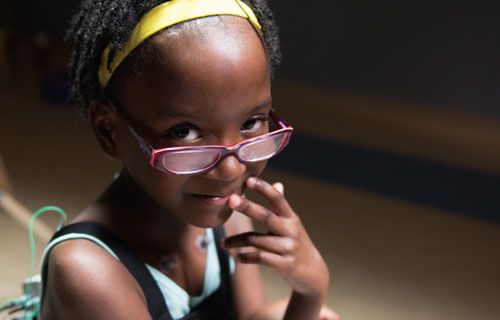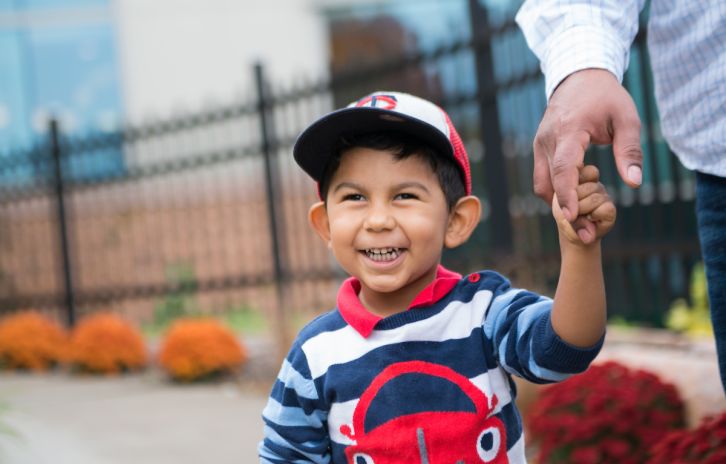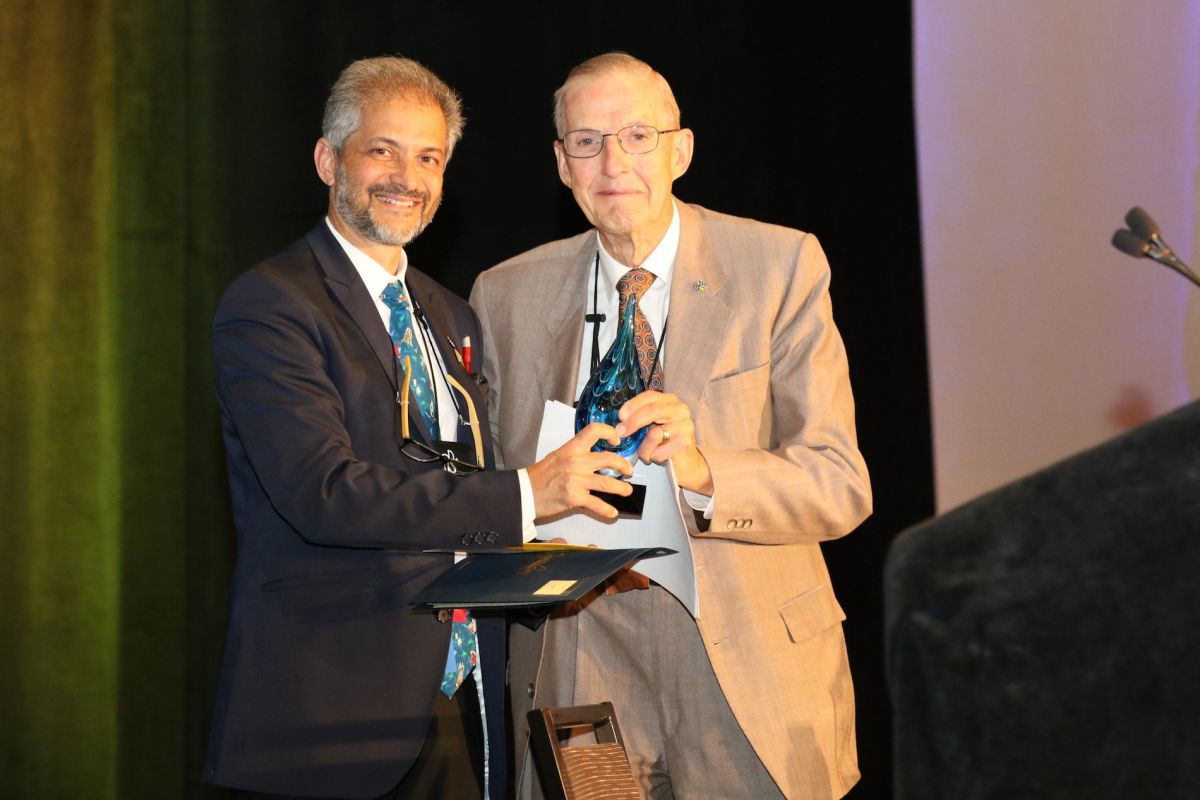
Jim Gage, MD, accepts his award from Unni Narayanan, president of the American Academy for Cerebral Palsy and Developmental Medicine.
Jim Gage, MD, walks unassumingly through the Gillette Children’s skyway toward the James R. Gage Center for Gait and Motion Analysis—the facility that today bears his name. On his way, he's recognized by many who consider Gage to be their mentor. Others call him their hero.
Now a retired pediatric orthopedic surgeon, Gage played a pivotal role in advancing the field of cerebral palsy treatment by propelling gait analysis into clinical practice. His work shaped the approach to how children who have cerebral palsy receive treatment and influenced the outcomes they experience.
On Sept. 23, 2016 Gage’s contributions received national recognition when the American Academy for Cerebral Palsy and Developmental Medicine (AACPDM) presented him with its distinguished Lifetime Achievement Award.
“To be recognized for a lifetime of commitment to these children means that people across multiple clinical disciplines have found Dr. Gage’s work to be exemplary and worthy of being recognized,” says Steven Koop, MD, Gillette medical director and Gage’s longtime colleague. “His career is something to be emulated by young people starting in this field.”
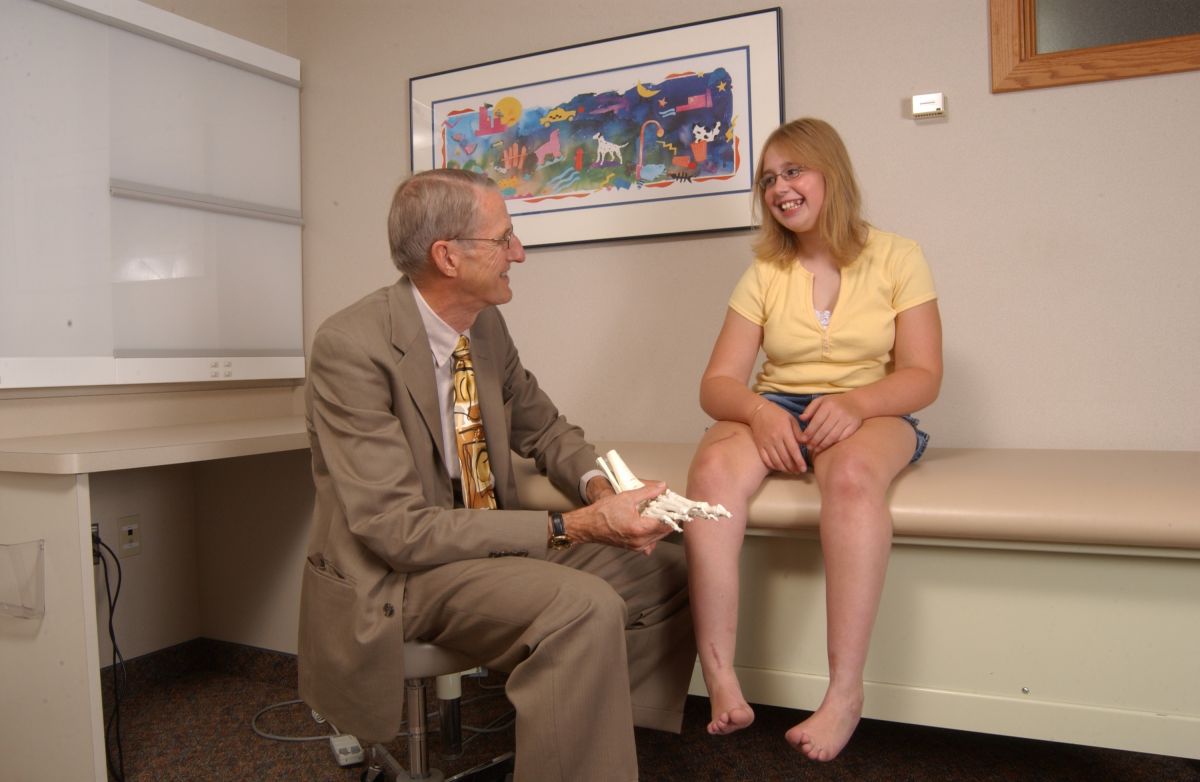
Jim Gage, MD, talks with a patient.
“There must be a better way.”
Before Gage’s career led him to Gillette, it took him to Newington Children’s Hospital in Newington, Connecticut, in 1976. At that time, children who had cerebral palsy underwent multiple surgeries and lengthy recoveries—but often met with disappointing outcomes.
“Many physicians of the time believed nothing useful could be done to help children who have cerebral palsy,” explains Koop. “Gait analysis existed, but was used exclusively for research.”
Gage believed, however, that there must be a better way. “He knew it would require an improved and more complete assessment of each child’s situation,” adds orthopedic surgeon Tom Novacheck, MD. “There was no way to evaluate complex movement disorders, so he led the effort to incorporate gait analysis into clinical practice.”
Gage’s exploration of using gait analysis technology to study human movement resulted in the creation of the nation’s first automated motion analysis lab at Newington Children’s Hospital. The second opened at Gillette in 1987, and Gage followed three years later. He would spend an additional 20 years advancing the hospital’s gait analysis work.
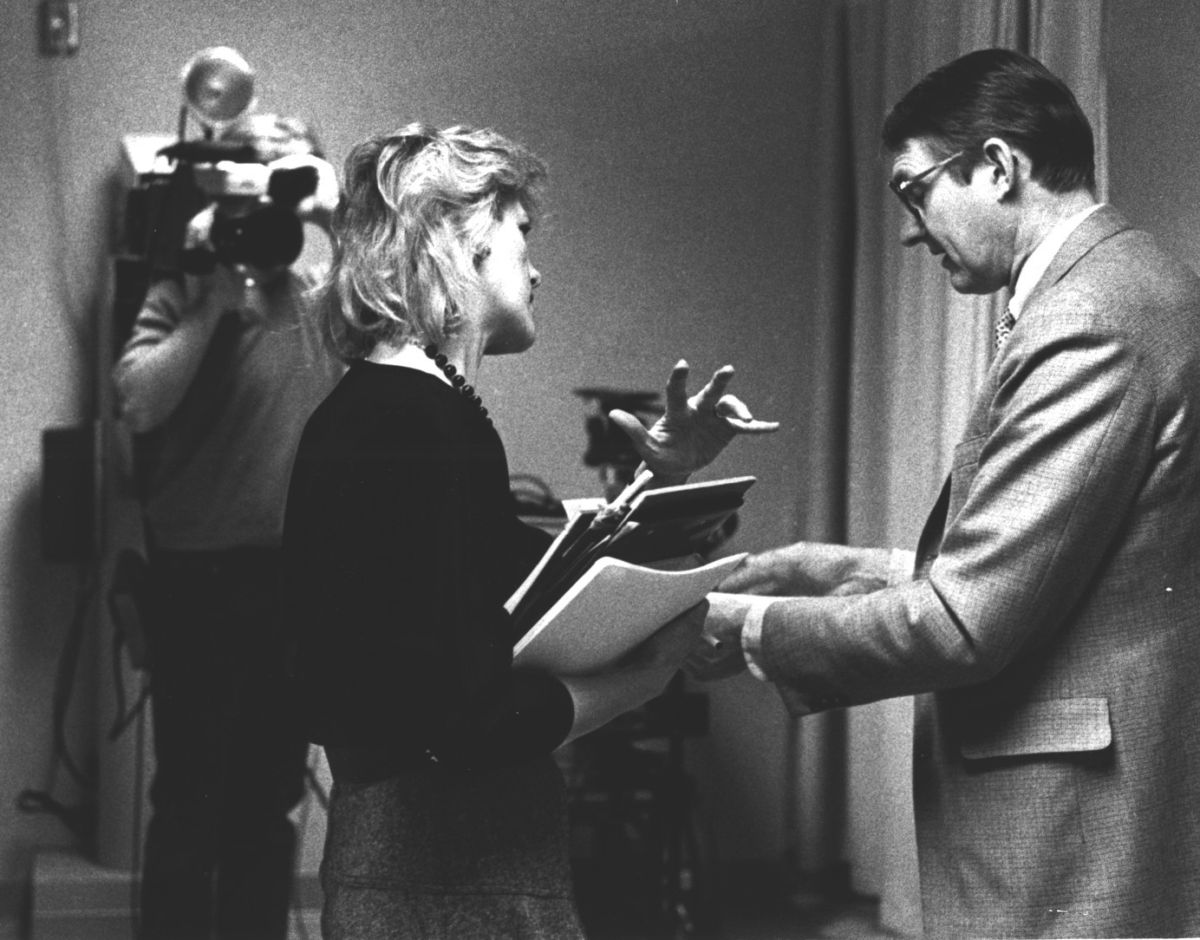
Jim Gage, MD, speaks with publication MD News in 1987.
An advocate for cross-disciplinary care
Closely tied to Gage’s belief in the importance of gait analysis was the idea of comprehensive, clinically integrated care for children who have cerebral palsy. When Gage began practicing medicine in the 1970s, cerebral palsy treatments were primarily orthopedic—focused on the correction of bone and joint problems. Gage considered spasticity (abnormal muscle tone) management an equally critical aspect of care.
“He was insistent that the best care would be the fruit of collaboration across disciplines,” says Koop. “As a result of his persistence, the current concept of first managing a child’s spasticity and then addressing the skeletal and muscular consequences of that tone emerged.”
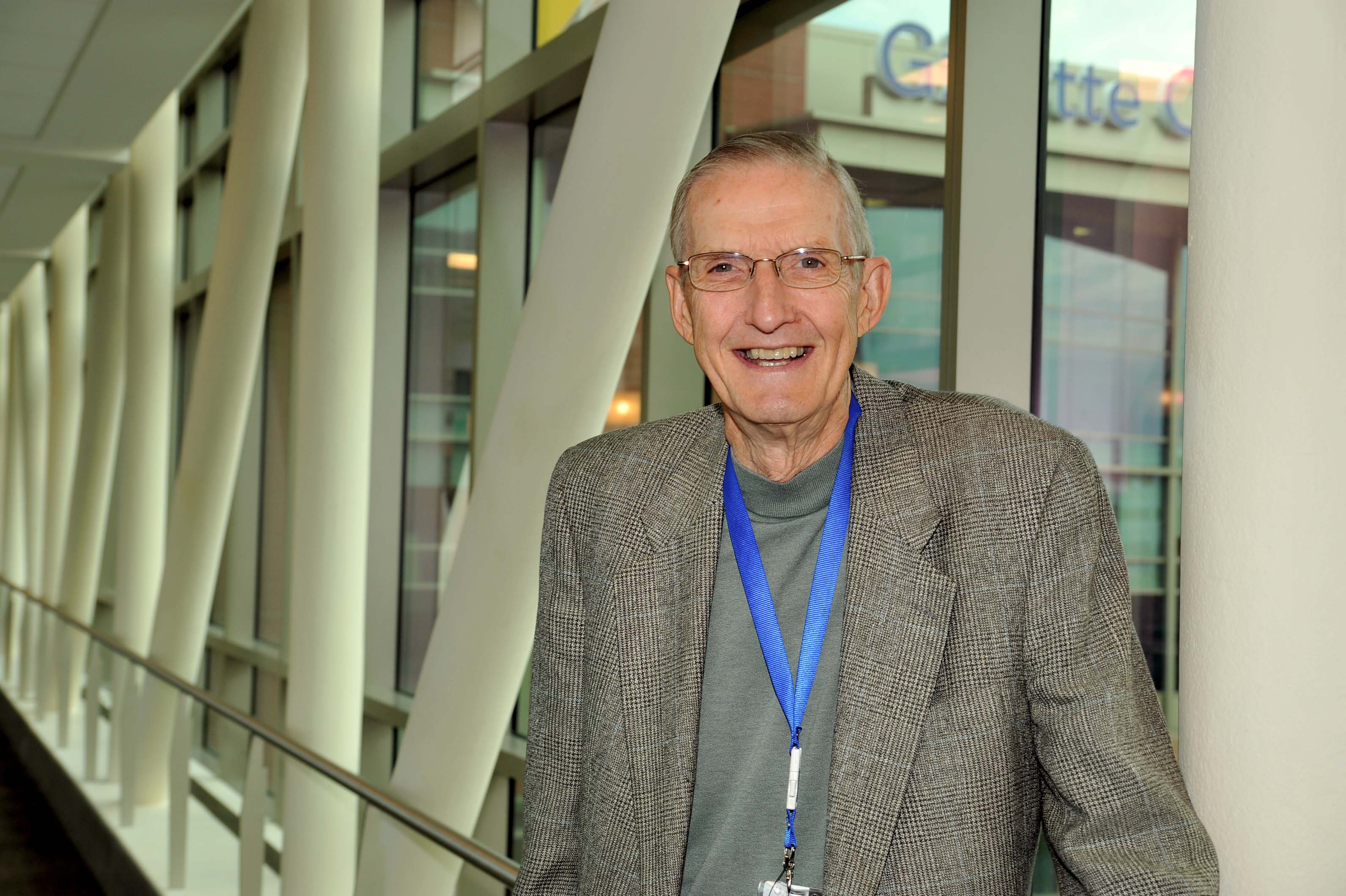 In addition to orthopedic surgeons like himself, Gage included neurologists, neurosurgeons, rehabilitation medicine physicians, physical therapists and other specialists in the treatment of children who had cerebral palsy. Collaboration brought opportunities to reexamine treatment methods like selective dorsal rhizotomy, a neurosurgical procedure that permanently reduces spasticity.
In addition to orthopedic surgeons like himself, Gage included neurologists, neurosurgeons, rehabilitation medicine physicians, physical therapists and other specialists in the treatment of children who had cerebral palsy. Collaboration brought opportunities to reexamine treatment methods like selective dorsal rhizotomy, a neurosurgical procedure that permanently reduces spasticity.
“Though not a new surgery, it had been abandoned for decades due to poor surgical outcomes,” explains Novacheck. “Dr. Gage recognized that Dr. Warwick Peacock’s modernization of the surgical technique and selection criteria improved outcomes. He implemented the use of gait and motion analysis to identify children as candidates and measure the effectiveness of surgery.”
Today, the cerebral palsy program at Gillette attracts patients from around the U.S. and world, largely because of the multitude of treatment options it offers and its ability to precisely measure outcomes.
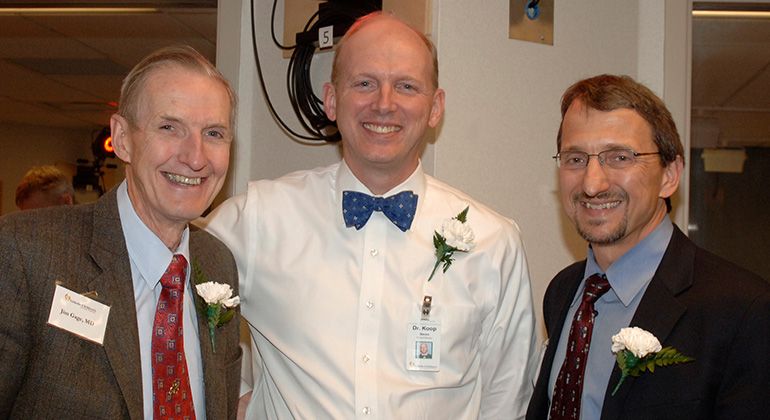
Jim Gage, MD, with colleagues Steven Koop, MD, and Tom Novacheck, MD.
Envisioning a child's future
In the mid-1990s, a colleague invited Gage to Hospital Vozandes-Quito in Ecuador to perform surgery on children who had cerebral palsy and other movement problems. Many of the children lived in impoverished areas and might have otherwise not received care. As Gage’s Gillette colleagues began accompanying him on the annual trips, the number of children they helped grew. The visits created opportunities to update South American surgeons in modern surgical techniques—and opened doors for international physicians to visit and learn from Gillette’s integrated care approach.
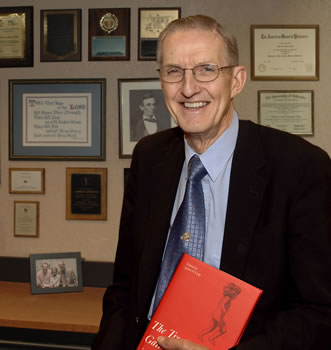 Gage initially published his early experiences as a monograph in 1991. More than a decade later, his pioneering work and global reputation in gait analysis led to the publication of an expanded, multi-authored text, The Treatment of Gait Problems in Cerebral Palsy, in 2003. The book, which Gage and co-editors updated and reissued in 2009, is comprehensive in regard to evaluation and management of cerebral palsy. In addition to Gage, chapters are authored by dozens of his colleagues from Gillette and throughout the world—all experts in cerebral palsy care.
Gage initially published his early experiences as a monograph in 1991. More than a decade later, his pioneering work and global reputation in gait analysis led to the publication of an expanded, multi-authored text, The Treatment of Gait Problems in Cerebral Palsy, in 2003. The book, which Gage and co-editors updated and reissued in 2009, is comprehensive in regard to evaluation and management of cerebral palsy. In addition to Gage, chapters are authored by dozens of his colleagues from Gillette and throughout the world—all experts in cerebral palsy care.
Whether treating patients at Gillette or through his international work, Gage’s colleagues define his approach as a refusal to accept mediocre treatment outcomes. Only the best would do.
“He emphasized understanding the child today while envisioning where the child could be tomorrow,” says Koop. “His lifetime of work made clear that children’s lives can be vastly improved when you are serious in your efforts and call on the skills of equally committed people from the whole spectrum of health care.”
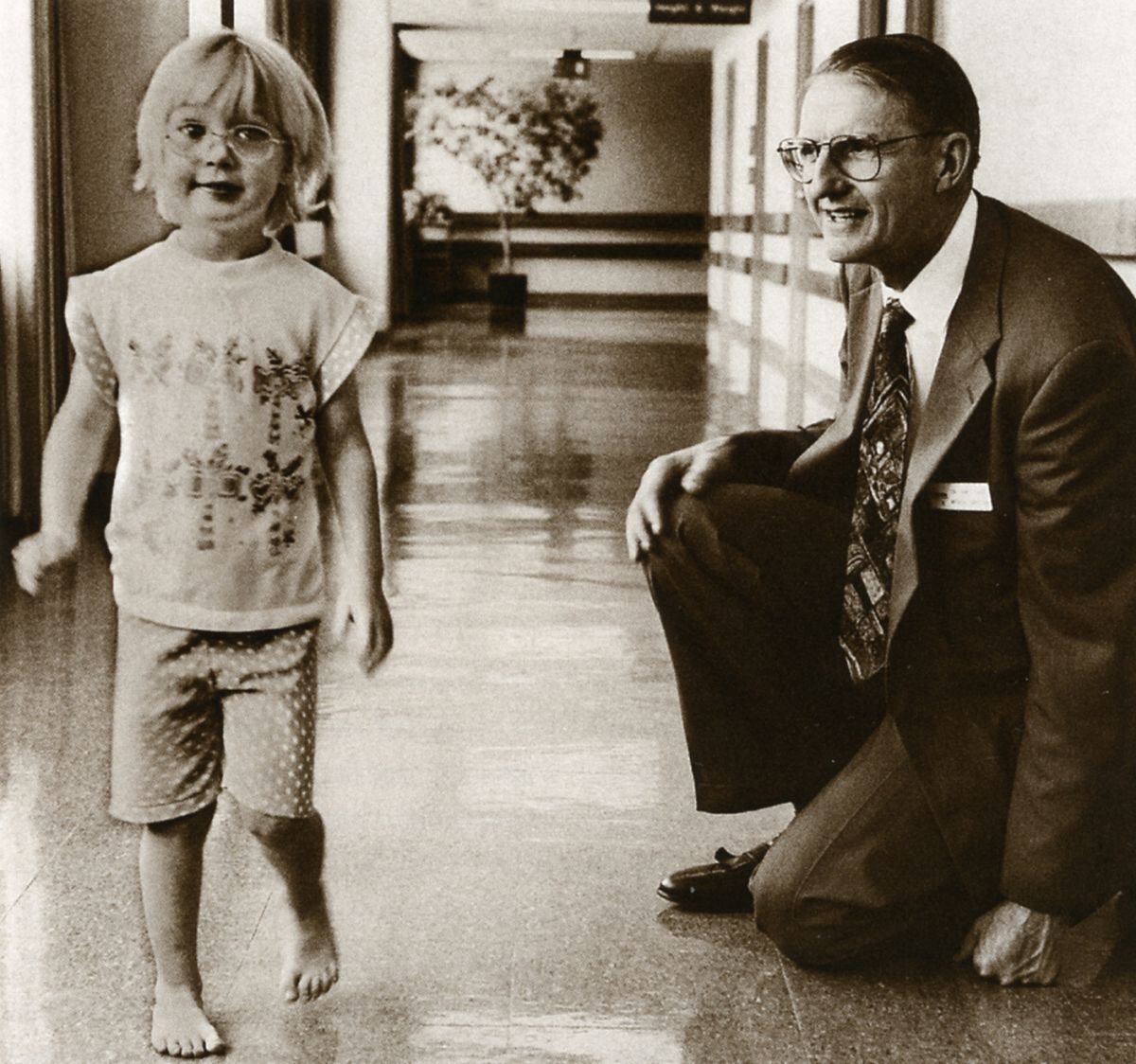
Jim Gage, MD, assesses a young patient's gait.
Do these symptoms sound familiar? Our 30-minute consult appointment could help get answers.
Request an appointment to connect with Gillette providers.
Meet a care team provider, find a location, learn how to get a second opinion, and more.
Gillette kids fuel our mission. You provide the spark. Donate today.

